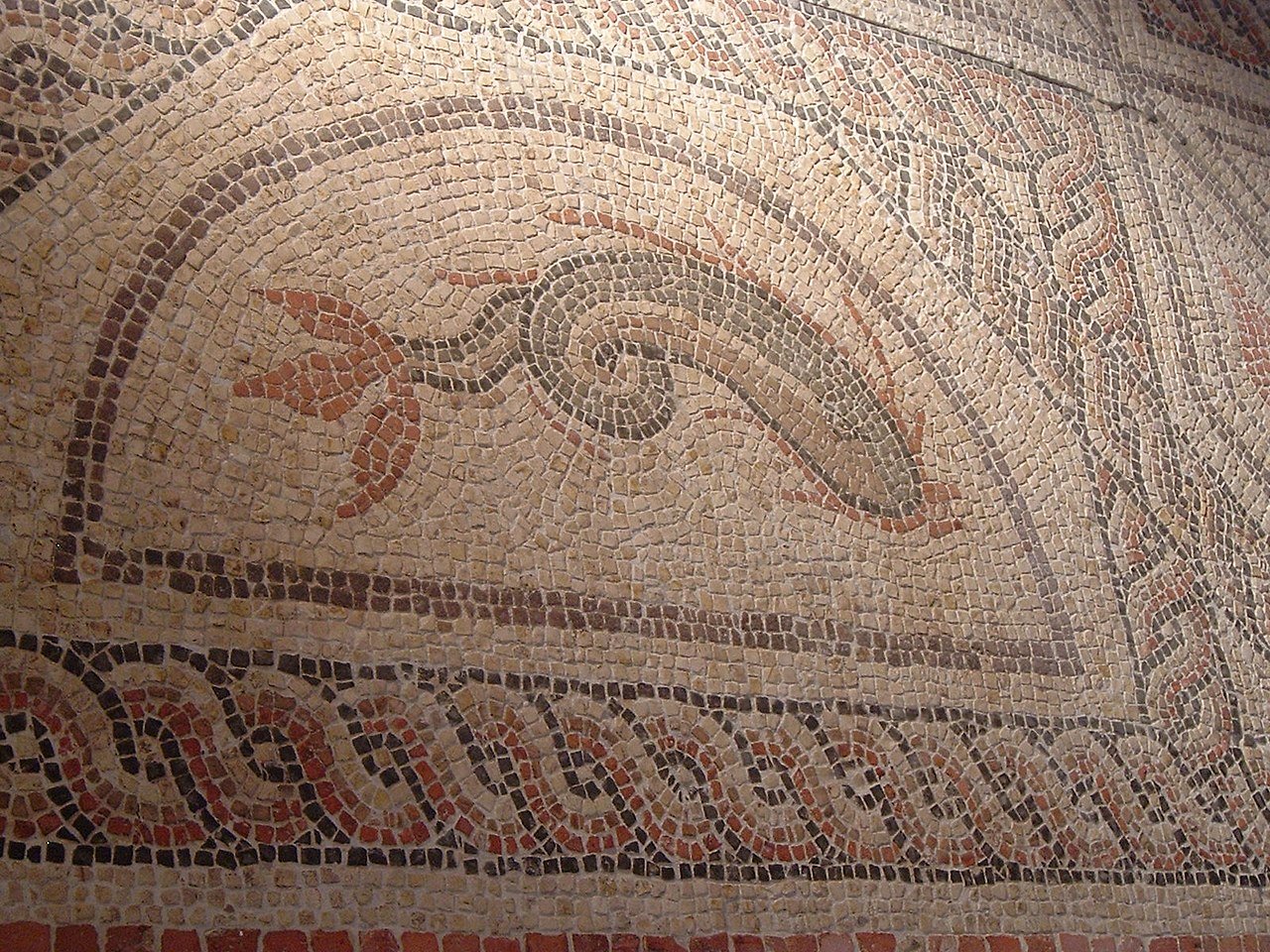

Archaeologists working in Thalheim near Wels, Austria, have uncovered three remarkably well-preserved Roman mosaics, including one that features a rare dolphin motif dating back to the 2nd century AD. The discovery has drawn significant attention and is being described as a major archaeological find in Upper Austria.
The mosaics were unearthed during ongoing excavations led by OÖ Landes-Kultur GmbH and the University of Salzburg. The site lies on Reinberg hill, overlooking what was once the Roman city of Ovilava, now modern-day Wels. Researchers believe the location, with its expansive layout and prominent position, was likely the property of a wealthy Roman family.
The building complex stretches over 1,000 square meters, making it one of the more substantial Roman-era sites found in the region. Its size, combined with the quality of the decorative features, suggests it belonged to someone of considerable social and economic standing during the Roman period.
Among the most remarkable elements are three Roman mosaic floors. One stands out for its rare depiction of dolphins, a design not commonly found in the area and notable for its detailed execution.
The second mosaic features a highly decorated wine-mixing vessel, a symbol often associated with Roman feasting and hospitality. The third displays a series of geometric patterns arranged with precision and artistic symmetry.
Experts say the combination of figurative and ornamental motifs speaks to both the wealth and aesthetic sensibilities of the original inhabitants. The mosaics reflect a blend of functionality, artistic tradition, and cultural expression typical of Roman domestic architecture.
Upper Austria Governor Thomas Stelzer (ÖVP) responded to the finding by highlighting the region’s deep historical roots. “The mosaics of Thalheim demonstrate once again the impressive cultural treasures our country contains,” he said.
He pointed to other lasting traces of early settlement, such as those found along the Danube Limes and in the Hallstatt region, as evidence of Upper Austria’s longstanding cultural significance.
Excavation work at the site is expected to continue until June 6. Shortly after, on June 10, the public will have an opportunity to visit the site during an “Open Excavation Day,” beginning at 1 p.m. Visitors will be able to view the mosaics in person and learn more about the ongoing archaeological efforts.
For those interested in deeper insights, a public lecture titled “Coins, Graves, Mosaics” will be held on June 25. During the event, researchers will present the excavation findings in detail for the first time.
Discussions are underway about a permanent display in the future. Officials are considering including the mosaics in the redesigned archaeology exhibition at the Linz Castle Museum. Another proposal would feature them at the 2027 State Garden Show in Wels.
